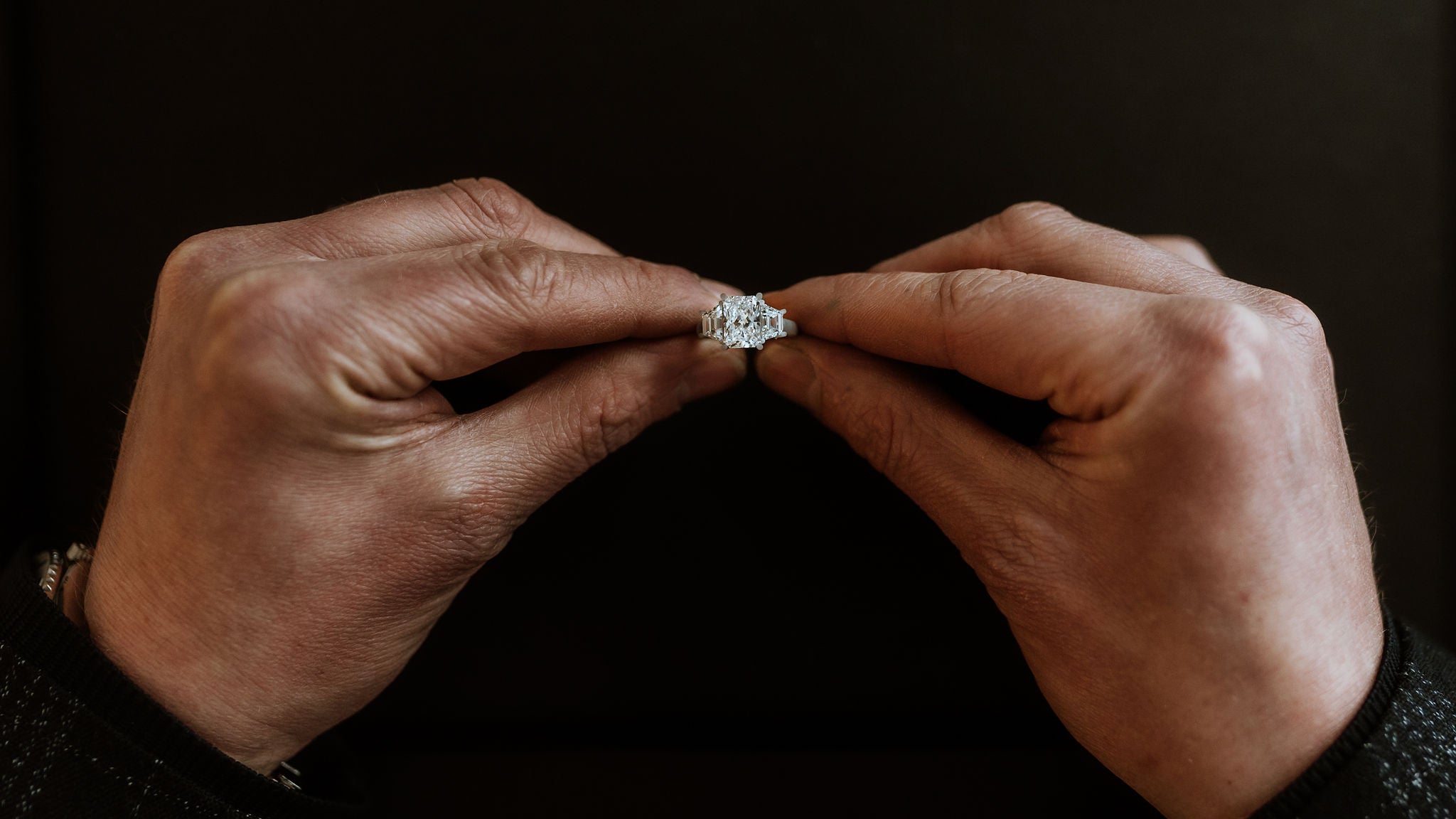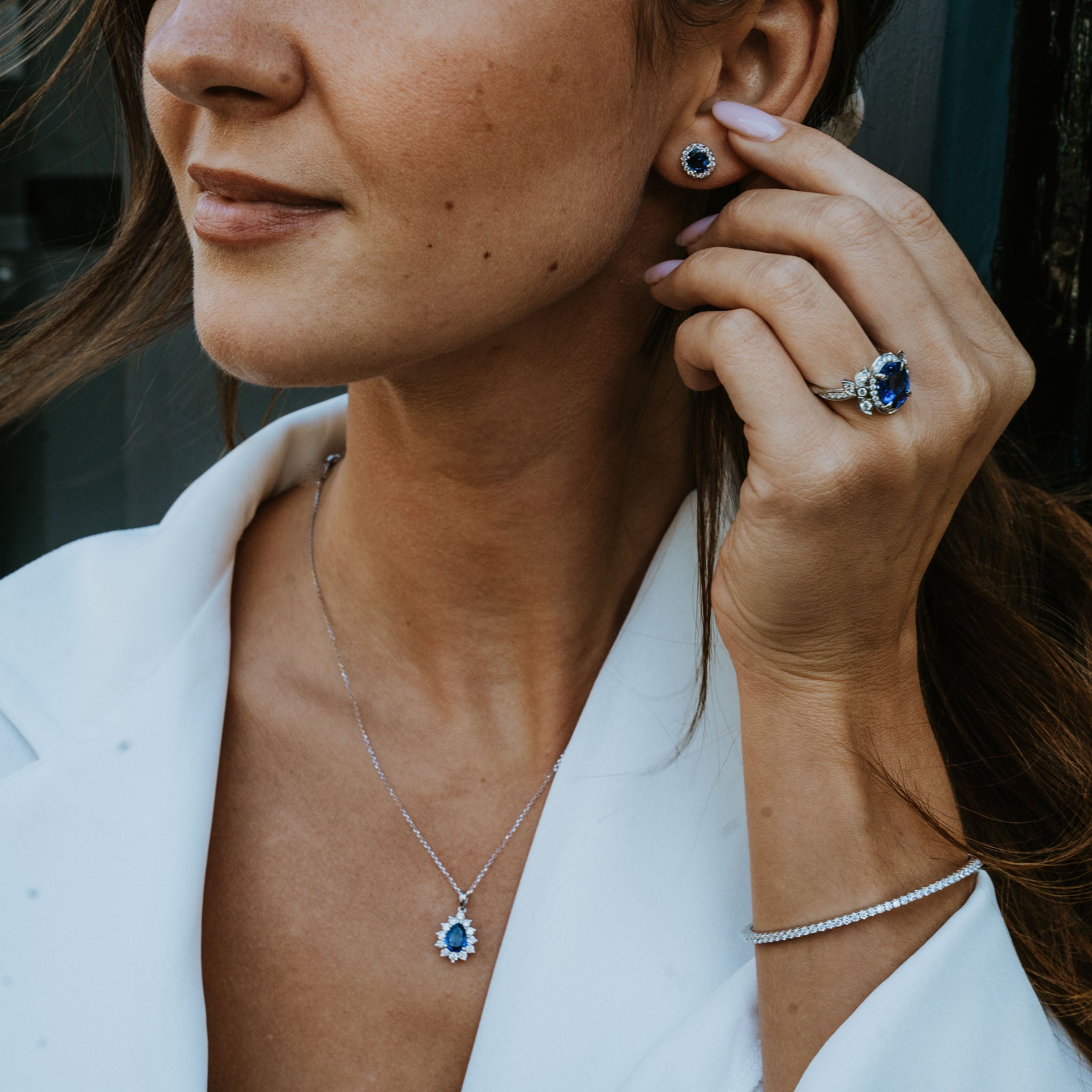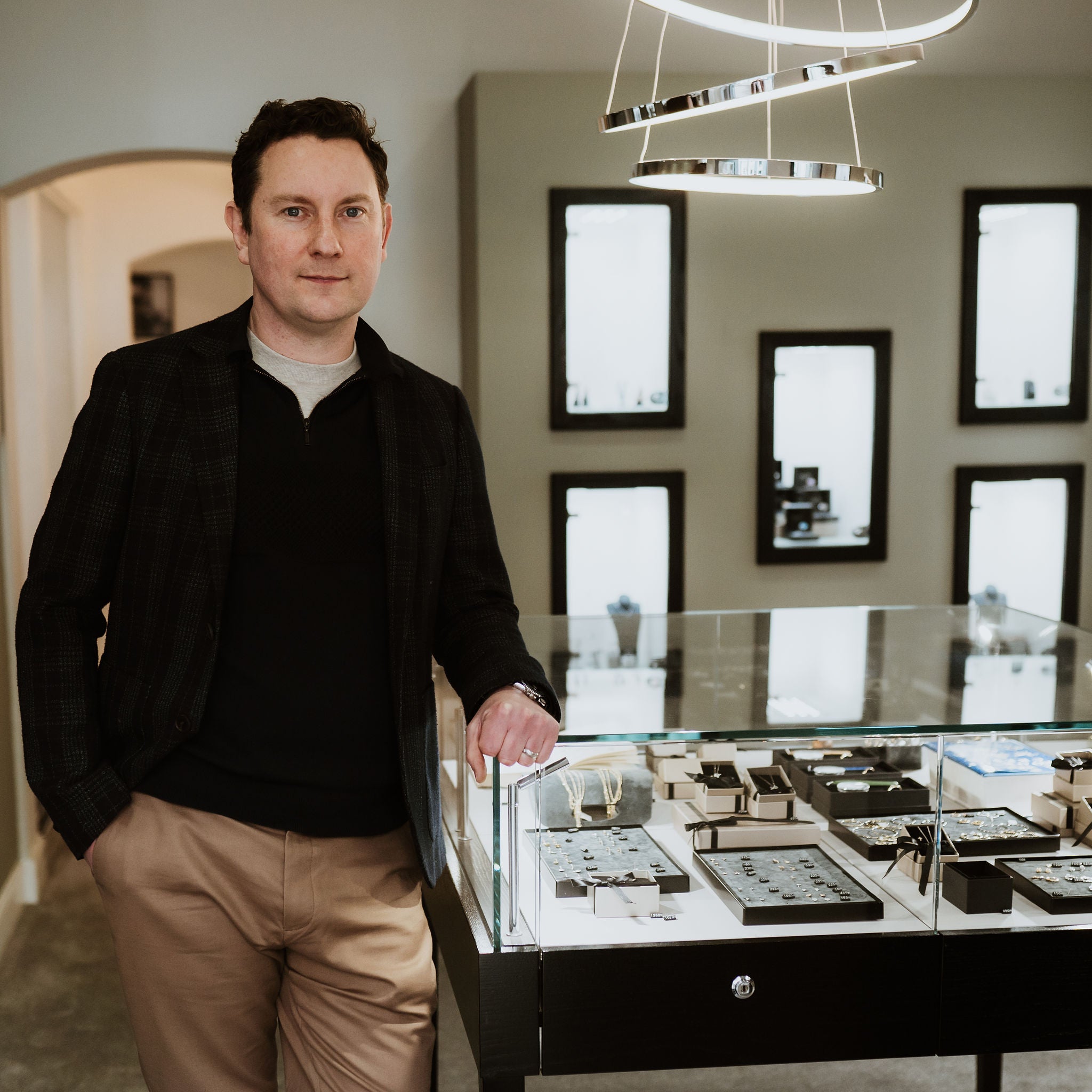 Diamonds are perhaps the most beloved gemstone for bespoke wedding rings, not only for their unparalleled beauty but also their formidable strength, signifying the unbreakable, formidable bond between lovers.
Diamonds are perhaps the most beloved gemstone for bespoke wedding rings, not only for their unparalleled beauty but also their formidable strength, signifying the unbreakable, formidable bond between lovers.
As the saying goes, diamonds are forever, and whilst other gemstones are beautiful and often deeply personal choices, there is a reason why the shimmer of a cut diamond is so common with wedding and engagement rings.
The origins of diamonds in wedding rings come from a 15th-century arranged marriage between two young nobles that became a charming albeit rather tragic love story.
A Love In Reverse
Marriage is typically the point where the often ephemeral flames of love are solidified into a legal union, but in the case of Mary of Burgundy and Maximilian, son of the Holy Roman Emperor Frederick III and member of the House of Habsburg, the order was reversed.
This was not necessarily uncommon for historical weddings, particularly amongst members of the nobility, and this tradition of giving rings to symbolise the marriage contract may predate formal wedding ceremonies.
In Ancient Egypt, the circle was an incredibly important symbol for eternity, often depicted as a snake eating its own tail. This symbol spread when Alexander the Great of Macedonia conquered Ancient Egypt, which in turn became part of the Roman Empire when Macedonia and Corinth were conquered.
Because wedding rings are made of precious metals and typically set with precious stones, they were up until recently seen as much as a symbol of a dowry or marriage contract between families as they were the symbol of love and connection they are today.
Part of that change may have come through the rather unusual circumstances of Mary and Maximilian’s bond.
Sealed With A Ring
Mary’s hand in marriage was highly sought after as soon as her father, Charles the Good, became the Duke of Burgundy. It was a very wealthy region, and as Mary was Charles’ only child and thus the presumptive heir, marrying her would be politically and financially beneficial, as cynical a view as that is.
Several princes attempted to court her but the surprising choice was Archduke Maximilian of Austria, not least because Burgundy and the Old Swiss Confederacy, then part of the Holy Roman Empire, were at war with each other.
Following the Battle of Nancy, which led to the death of Charles the Good, Mary assumed control of Burgundy, and Maximilian set off to present her with a suitable engagement ring.
The problem was that whilst the Habsburgs had power, they did not have that much money, and the constant wars in and around Austria had drained their financial resources.
Despite this, Maximilian managed to gather enough gold and silver (allegedly as gifts from villagers) to procure a small, simple gold ring, and set into it several small diamond shards in the shape of an “M”, making it the first bespoke diamond engagement ring ever made.
It worked, Mary said yes and the two were married six months after Mary became the Duchess of Burgundy.
Convenience And Compassion
Rather remarkably for an arranged marriage based on finances and armies rather than affection, the pair fall in love with each other, realising they have a lot in common with each other and appreciating each other’s company.
The pair loved music and would often dance together, they owned several animals together including a number of falcons (one of her official symbols) and would read romances together.
One particularly interesting detail is that Mary tried to teach Maximilian how to ice skate, and the future Holy Roman Emperor struggled to master it himself.
Unlike other noble marriages of the time, they lived together and shared responsibilities remarkably evenly, in part due to Mary’s political power but also due to Maximilian’s (at the time) relatively agreeable demeanour.
Rather famously, Maximilian attempted to declare war on a French army that would have almost certainly routed and conquered Burgundy, but Mary managed to talk him out of it and the pair went dancing instead.
Tragically, whilst they had a remarkably close bond, she would die just five years after their wedding several weeks after a tragic hunting accident on 27th March 1482.
Maximilian was stricken in grief, to the point that she lied about the seriousness of her internal injuries and requested he leave their chambers so she could discuss state matters amidst their somewhat complicated wedding agreement.
Whilst both Mary’s reign and the marriage sparked by the first diamond engagement ring were short, the impact it would have would be significant.
It led to the War of the Spanish Succession two centuries after her death through a complex domino effect in Europe, but it also began a tradition of diamond wedding rings that continues to this day.





